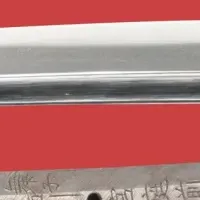
Exploring the Cultural Exchange Within Ancient Roman Grapevine Art
The Significance of Grapevine Ornamentation in Ancient Rome
The recent scholarly work titled _Study of Grapevine Ornament on the Silk Road_, authored by Professor Chang Ying and published by the People's Publishing House, delves into a fascinating aspect of cultural history. This book meticulously examines the intricate relationship between grape vines and Roman art, connecting various civilizations through cultural exchanges facilitated by the legendary Silk Road. This ancient trade route served as a bridge for artistic influence and mutual understanding between East and West, and the study of grapevine ornamentation stands as a testament to that dialogue.
Grapevine Symbolism and Its Cultural Implications
One of the central themes of the book focuses on the symbolism associated with grapevines in Roman funeral culture. The grapevine was not merely an aesthetic choice but laden with profound meanings. It represented abundance, the continuity of life, rebirth, and protection, closely linked to Dionysus, the god of wine. These symbolic layers contributed significantly to the popularity of grapevine motifs in funerary and ritual contexts, making them a compelling study for scholars and enthusiasts alike.
The Artistic Craftsmanship of the Romans
In addition to its symbolic meanings, Professor Chang Ying’s book offers an in-depth analysis of the artistic forms derived from Roman grapevine ornamentation. The study posits that the naturalistic depictions of grape leaf designs reflected advancements in craft technology and varying skill sets among artisans of the time. The author suggests that Roman craftsmen drew inspiration from nature to create lifelike representations of grape leaves and vines. This emphasis on realism involved meticulous attention to detail, such as capturing the varied contours that branches and leaves possess after they absorb sunlight or moisture.
Diverse Materials and Styles
Moreover, the book provides a comprehensive look at the diverse materials employed in crafting grapevine designs, including pottery, metalwork, stone carvings, and more. Through examining these various forms and techniques, the study reveals how artists synthesized cultural symbols into captivating designs across different historical contexts. This breadth of exploration enhances our understanding of the uniqueness and evolution of Roman decorative arts.
Cultural Exchange Across Civilizations
What makes this study particularly remarkable is its expanded contextual framework. Rather than limiting the discussion to Roman art alone, the book opens a dialogue about the broader cultural exchanges that occurred throughout regions such as the Levant, Etruria, North Africa, and even the Arabian Peninsula. By doing so, Professor Chang’s work contributes fresh perspectives that highlight the interconnectedness of these different cultures and how they influenced one another through the lens of art.
A Foundation for Future Research
In conclusion, _Study of Grapevine Ornament on the Silk Road_ by Professor Chang Ying is not merely an exploration of a decorative art form but an insightful narrative that captures the essence of ancient cultural exchanges. It underscores the significance of shared heritage and mutual recognition among diverse civilizations, laying the groundwork for future scholarship. As we revisit the tapestry of shared human history, works like these remind us of the importance of understanding our past in fostering collaboration and cultural cooperation along the Silk Road.
- ---
This deep dive into the wealth of cultural exchange highlights why the grapevine ornament deserves attention and appreciation in the study of ancient Roman art and its relations with neighboring cultures. Through a combination of diligent research and engaging narrative, Professor Chang has provided invaluable insights into how art can serve as a vessel for exchanging ideas, beliefs, and traditions across time and space.
Topics Entertainment & Media)










【About Using Articles】
You can freely use the title and article content by linking to the page where the article is posted.
※ Images cannot be used.
【About Links】
Links are free to use.